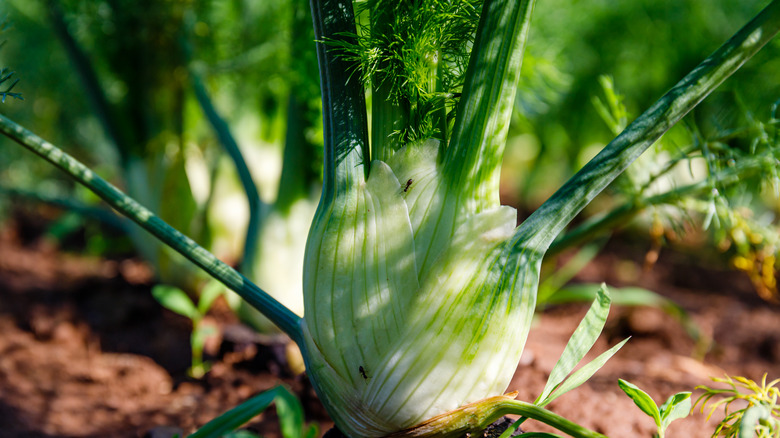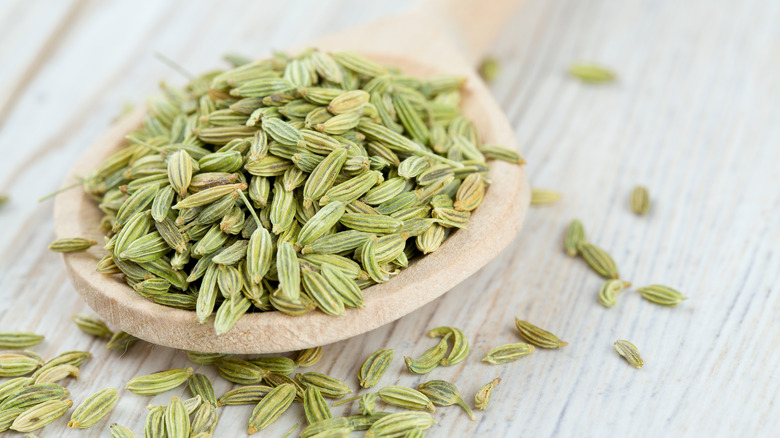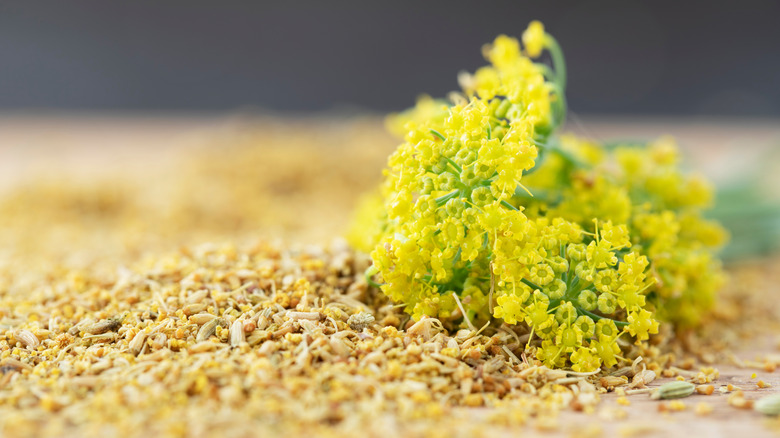Fennel Seed Vs. Fennel Pollen: What's The Difference?
A member of the carrot family, per the University of Wisconsin-Madison, fennel resembles anything but Bugs Bunny's favorite snack. Somewhat of an amalgam of onion, celery, and wispy dill, the fennel plant is downright intimidating to even the most well-versed veggie whisperer. From how to slice and dice it, to how to cook it, to which parts of the vegetable mash-up to use, fennel can be a culinary conundrum.
Perhaps somewhat of a polarizing plant when it comes to people's palates, fennel is known for its licorice flavor, per Plant Prosperous. From the bulb and leaves to the stalks and fronds to the seeds and pollen, all parts of the fennel plant are edible. They all carry a similar flavor, but the forms and uses of each part of the perennial plant run the gamut. Its smallest components, the seeds and pollen, are often confused, but they are anything but similar. So what's the difference between the two?
What are fennel seeds?
Fennel seeds are the small, oval dried seeds of the fennel plant. They are brownish-green in color and gray as they age. The younger, green seeds are more suitable for cooking, per Whole Spice, and complement a range of foods whether whole, crushed, or ground.
Fennel seeds are either bitter or sweet, depending on the variety. Eastern Europe is home to bitter ones which taste similar to celery. The more common fennel seed most are familiar with is the sweet one, which has a similar flavor to its plant parent (via My Favourite Pastime).
Fennel seeds are a component of Chinese five spice powder and are often a star flavor in Italian and breakfast sausages. The flavorful seeds can also be made into a tea or chewed on at the end of a meal, as they aid digestion, per Greatist. Outside of the kitchen and culinary applications, fennel seeds have been used to improve eyesight and repel insects, as well as keep hunger at bay, per The Woks of Life.
What is fennel pollen?
Unlike other types of pollen that have no taste and may cause a seasonal runny nose and itchy eyes, fennel pollen is a prized delicacy in Italian cuisine. Dubbed "culinary fairy dust" by chefs, it is harvested from the blossoms, or flowers, at the end of the fennel stalk, per Bon Appétit. The pollen itself has the same flavor notes as fennel seed, yet with a stronger citrusy essence and a sweeter, honey-esque quality. For this reason, just a sprinkle is sufficient. It's used more as a finishing touch, hence its dust nickname.
Fennel pollen comes with a higher price tag than fennel seed — it is one of the most expensive spices. In fact, a quarter of an ounce of fennel pollen from Spice House is $12.99, while a 2-ounce jar of fennel seeds is $5.99.
The flowers of the fennel plant are small, so they only produce a small amount of pollen and it is typically harvested by hand. Hundreds of flowers will only provide enough pollen to fill just a small jar, according to Delighted Cooking. So knowing the difference between fennel seeds and pollen is not only important from a culinary standpoint but for the sake of your wallet as well.


